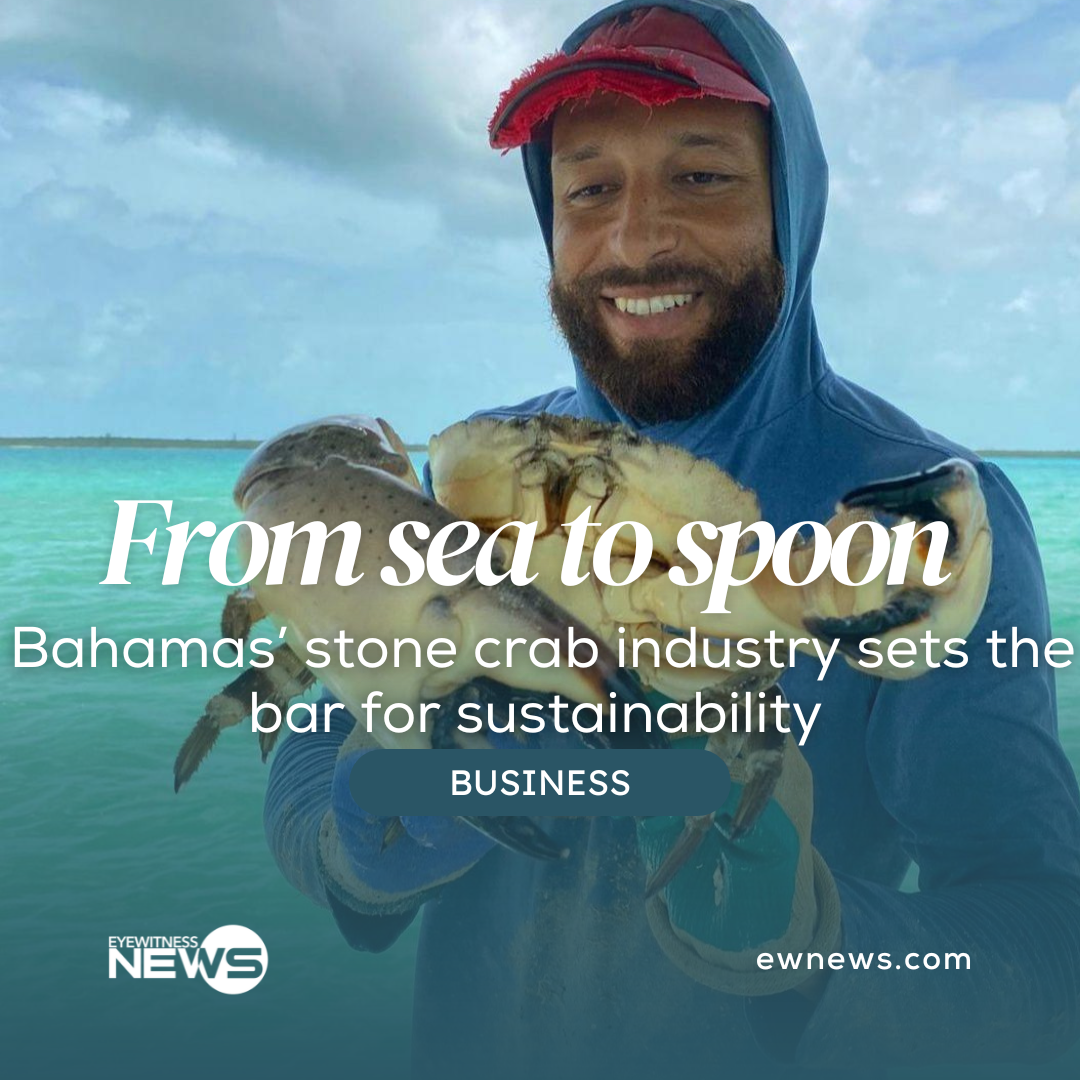NASSAU, BAHAMAS — While Bahamians eagerly anticipate the start of fishing seasons for beloved seafood like the Land Crab and the Bahamian Spiny Lobster, there’s a hidden culinary gem in Bahamian waters often overlooked by local consumers – the delectable and sustainable stone crab.
In contrast to its more popular seafood counterparts, the stone crab stands as a year-round delicacy, with only a brief closed season lasting a little over three months, from June 1st to October 15th.
 But what truly sets the stone crab fishing industry apart is its commitment to sustainability. According to Bahamian Celebrity Chef and International Culinary Contributor, Simeon Hall Jr, the stone crab is harvested in an eco-conscious and sustainable manner. Only one of their claws is collected while the rest of the crab remains intact.
But what truly sets the stone crab fishing industry apart is its commitment to sustainability. According to Bahamian Celebrity Chef and International Culinary Contributor, Simeon Hall Jr, the stone crab is harvested in an eco-conscious and sustainable manner. Only one of their claws is collected while the rest of the crab remains intact.
It’s not just ethical; it’s the law. Harvesting whole stone crabs is illegal in The Bahamas, and this unique approach to harvesting allows the stone crab to regenerate its claws over time.
Hall, a staunch advocate of the sea-to-spoon movement, firmly believes that this harvesting method is not only vital for our local ecosystem but also plays a crucial role in safeguarding our thriving stone crab export industry, which is the third largest fishery export in The Bahamas.
“Many Bahamians are unaware that stone crab claws are a significant million-dollar export for The Bahamas, with local fishermen supplying these crab claws to restaurants in Florida and along the southern U.S. coast. It’s a big deal!,” shared the Bahamian restaurateur.
Captain Chris Symonette, from whom Simeon Hall Jr. often sources his stone crabs and seafood, provided further insights into this crab species. He emphasized their abundance in the waters of Andros, Grand Bahama, Abaco, and Eleuthera.
Captain Symonette also mentioned the unique practices of some fishermen, noting that they may choose to boil their stone crabs at sea to preserve their freshness. However, this method’s implementation varies and can depend on the setup established by the fishermen, with some using cooking vessels or seafood processing plants for this purpose.
He further highlighted that stone crab prices are influenced by the international market, much like lobster. During the last season, these prices spanned from $15 to $20 per pound.
How To Prepare
Simeon Hall Jr. advises that the first and most crucial step for preparing stone crab claws is ensuring that it’s purchased from a reputable fisherman, particularly from a boat that harvests in small batches to guarantee fresher crabs claws.
“Once home, thaw your stone crab claws overnight in your refrigerator away from any raw or uncooked foods,” he further advised.
According to the Bahamian Celebrity Chef, in some instances, the stone crabs’ claws are actually boiled by the fisherman after catch to preserve freshness, so local customers should ask their fisherman or vendor if the crabs are already pre-cooked.
Hall’s expert advice suggests serving the stone crab claws cold – but not raw – to preserve their exquisite flavor, as overcooking can significantly compromise their taste. To amp up the flavor of these crab’s claws even more, Simeon Hall Jr. suggests serving the chilled claws with a mustard sauce or cocktail sauce.






